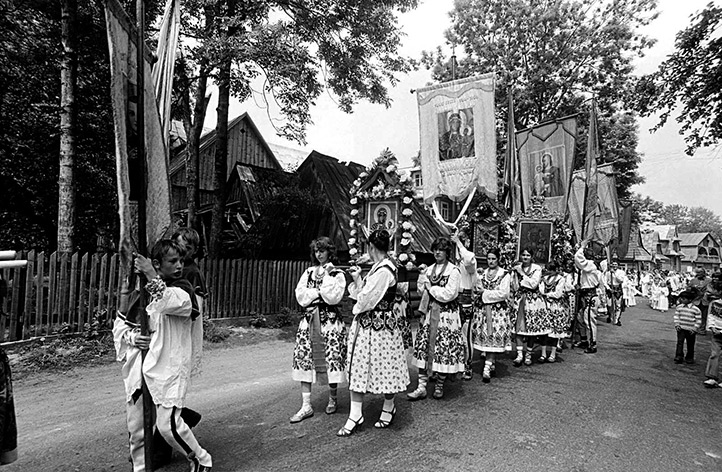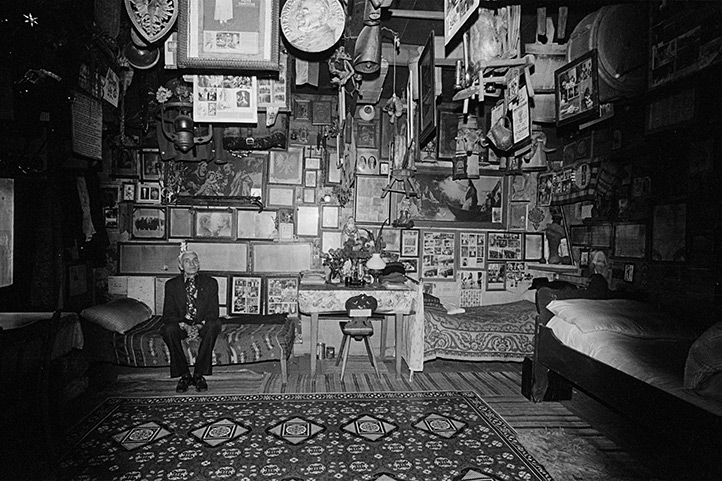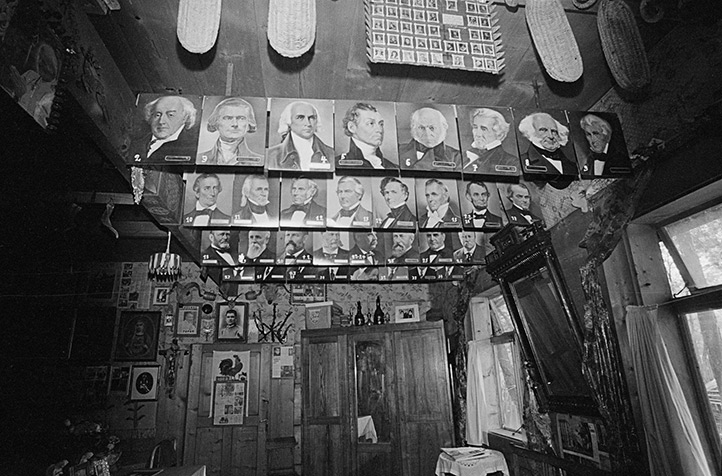Excerpt from a letter sent by Zofia Rydet to Krystyna Łyczywek, Chochołów, June 11, 1982
Yesterday I went to the Corpus Christi procession in Chochołów. A marvelous spectacle. All the wooden huts decorated with big tapestries, two by one-and-a-half meters, in rainbow colors. A kind of tapestry from Chicago: the Pope, the heart of the Holy Mother, the Good Shepherd, and various others. The wooden huts done up in flowers practically begged for color film. I kept thinking of you, that you don’t see photographing Poland as your strength; for me it provides more than attractive trips abroad, because here, even when you photograph our villages, you create the history of Polish culture and ethnography, which is, at present, going so terribly barren, colorless, urban. There are still these enclaves of beauty. They are vanishing at a terrifying speed, and only we photographers can stop it, to show them to others.
The procession was marvelous, with those costumes, so rich, colorful, the white embroidered blouses, red velvet, also embroidered, the skirts and serdaki [vests], the strings of gorgeous beads. I didn’t know where to point my camera.

And then, while searching for houses, I found something totally unique. An old man (seventy-five)—a whole family, a wife and eight children, in Chicago—was very devoted to a Home Army liaison officer named “Karol,” who even shepherded Śmigły; he built a museum in his huts and farmyard, the likes of which I’ve never seen. A conglomeration of old mountain gear collected over years, some spinning wheels, bits of antlers, whole collections of churns, bells, etc., etc. And then some jumbled American history—all the American presidents (in color, 24x30 cm) hanging from the eaves of a wooden ceiling, and old original photographs of Piłsudski, various shots of the Pope, next to that Rydz-Śmigły, and then some ram heads. It all made a remarkable impression; you could photograph it meter by meter for a whole week.
Apart from that, he wrote a ten-volume history of Chochołów, a history of the war with photographic documentation. One volume is Piłsudski, another is Rydz-Śmigły. All handwritten, some mountain dialect with errors, but full of passion, and collections of various photos and press clippings documenting it all. Unfortunately, I can’t describe it all for you.

